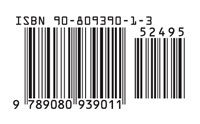
Just in time for 2005 : a pretty good approx of what I had in mind
with TheLibrary.
The major new feature is one-page view. That
is, if you click on a bookmark or search-page link you will get a page
(as in the screenshot below) consisting of three frames. The left-bottom
frame contains the pdf file of _just_ the requested page, hence
your brwoser no longer has to download the full pdf-file to get at the
wanted page which speeds up the process. The downside is that you can no
longer scroll in neighbouring pages. To compensate for this there are
_previous page_ and _next page_ buttons in the top frame
as well as a link to the index and search page of the document.
An added bonus of this set-up is that the author of a document can
control what readers can do with these pdf-pages. For example, the pages
of 3 talks on noncommutative geometry@n
admit all features (such as content-copy, merging pages, printing etc.)
whence a determined reader can reconstruct the full pdf-document if
he/she so desires. On the other hand, the pages of version 2 can only be printed at a low
resolution and those of version 3 do not even permit this.

The bottom-right frame of the pages allow the reader
to read (and post) marginal notes wrt. the content of the document-text
(such as : extra references, errors, suggestions etc.). As always,
comments are great; obnoxious comments get deleted. Deal!
Once
again, if you like your courses and or books (on a subject from either
non-commutative geometry or non-commutative algebra) to be included in
TheLibrary email.
All scripts are adapted from the original
scripts from pdf
hacks.

 How to sell
How to sell